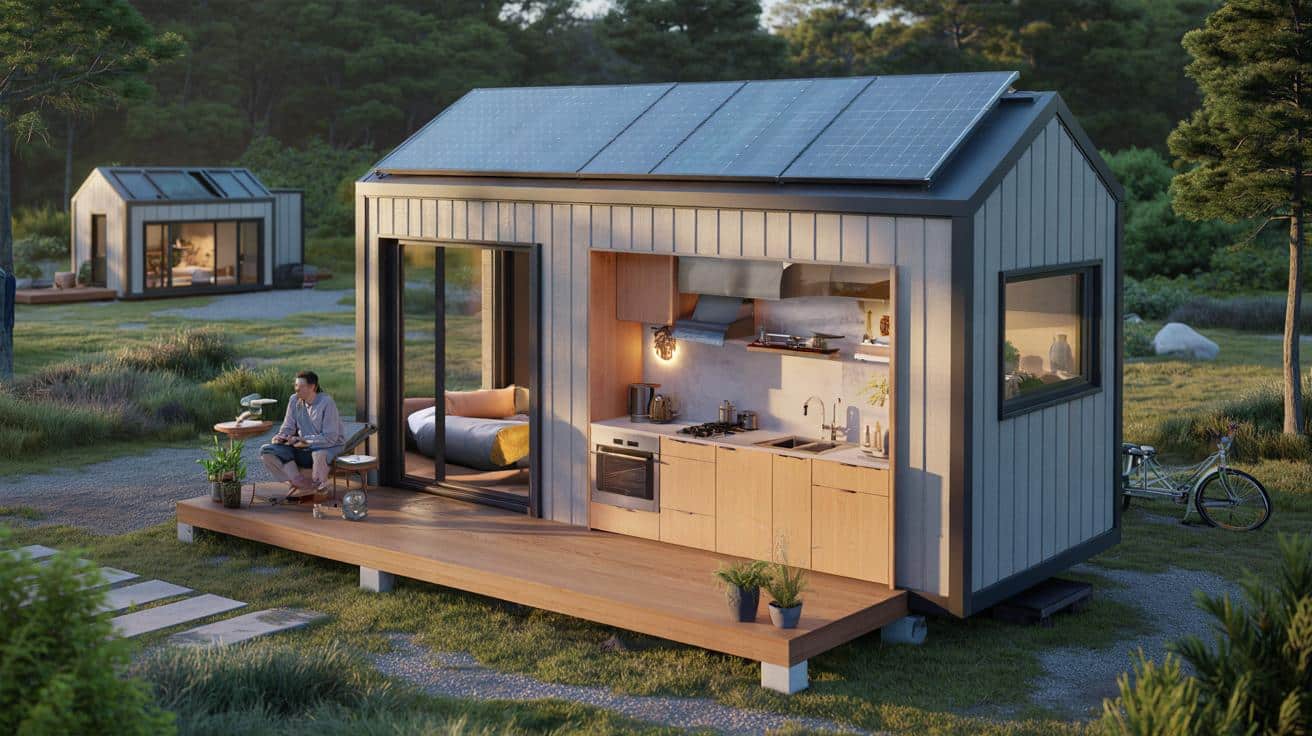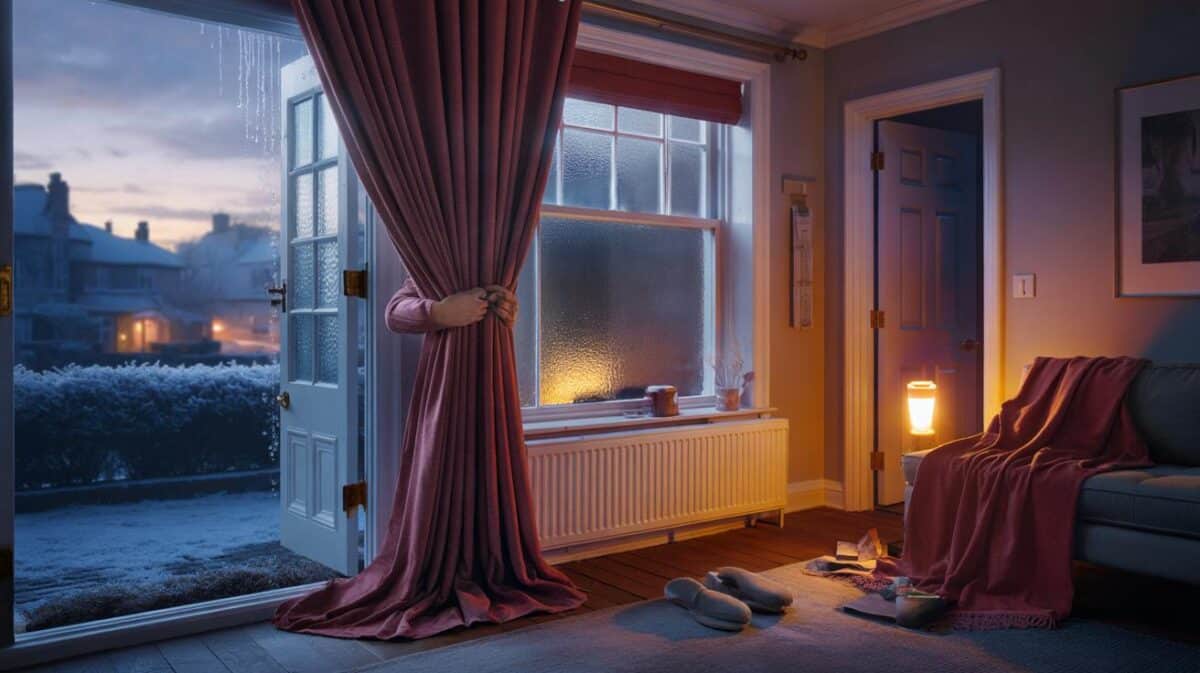Amazon now lists a modular, solar-roof tiny house that undercuts many studio flats, pitching a ready-to-personalise two-bedroom shell from $10,178. The model headlines a growing catalogue of prefabs promising faster setup, lower running costs and options to expand to family size. For shoppers weary of rent hikes and volatile utilities, the proposition lands with timely force.
What Amazon is actually selling
The core listing centres on a steel-framed, prefabricated tiny home measuring 387 sq ft (about 36 m²). It’s arranged as a modern two-bedroom, one-bath layout, prewired for electricity and plumbing to speed up commissioning on site. Panels use flame-retardant foam boards, and the shell is built to withstand harsh weather, according to the seller. The headline feature is a built-in solar roof designed to shoulder everyday loads such as lighting, appliances and climate control.
The entry price sits at $10,178 for a solar‑topped, two‑bed prefab shell that arrives prewired and ready for rapid setup.
Large double‑pane windows aim to brighten the space and improve thermal comfort. Inside, you get a compact kitchenette with an induction hob, an oven, built-in storage and worktop space for simple meal prep. A small front porch offers shade and an obvious zone for relaxing or stringing up lights for evening use.
Size, layouts and the promise of more room
Not every tiny home stays tiny. This model can scale up to 774 sq ft (roughly 72 m²), and the seller lists five layout options, including two 40‑foot formats with as many as four bedrooms. Buyers can request bespoke floor plans and choose finishes such as flooring, window styles, paint colours and bathroom fixtures. That flexibility opens doors to different use cases: an accessory dwelling for relatives, a detached office or studio, a rental cabin or a full‑time small family home.
The range stretches from a 387 sq ft starter to a 774 sq ft configuration, with up to four bedrooms on the table.
Interior essentials
- Two bedrooms and one bathroom in the base plan
- Kitchenette with induction cooking and oven
- Double‑pane glazing to improve light and comfort
- Steel frame and insulated panels with flame‑retardant foam
- Prewired electrical and plumbing runs for quicker commissioning
- Integrated solar roof to offset daily energy use
- Covered front porch for shaded outdoor space
Can a solar roof truly run a home?
That depends on the array size, battery capacity and your habits. The listing doesn’t publish a specific wattage. As a rough guide, a modest 2–3 kW rooftop system in a sunny region might produce 6–12 kWh on a good day. That can cover LED lighting, a fridge, laptops, a television and light cooking, with room to spare, especially if you use induction hob bursts rather than long cook cycles.
Heating and cooling change the equation. A high‑efficiency heat pump could draw 0.6–1.5 kW while running, which quickly eats into daytime production and battery reserves. A 5–10 kWh home battery can bridge evenings and cloudy spells for essentials, but long cold snaps still favour a hybrid approach: solar first, then grid or generator as a backup. In short, the solar roof meaningfully trims bills and adds resilience, but tailoring the system to climate and use patterns matters.
What you will still need to sort
“Prefabricated” and “prewired” don’t mean turnkey. Most buyers will need to plan and budget for the following steps before moving in:
- Permissions and compliance: local planning approval, zoning rules, and building codes for foundations, electrics and plumbing.
- Foundation: ground screws, a concrete pad or piers, depending on soil and wind loads.
- Final connections: licensed trades to connect the prewire to your supply, install a consumer unit, commission the inverter and tie into water and waste.
- Thermal details: confirm insulation ratings, air‑tightness and window specs for your climate zone.
- Logistics: site access for lorries and cranes, placement of sections, and weather protection during assembly.
Who this suits — and who should pause
This type of package makes sense if you want speed, known costs and a compact footprint. It excels as a backyard annex, a starter home on a rural plot, a weekend cabin, or a flexible office/studio with guest capacity. Those in strict homeowners’ associations, high‑snow regions or dense urban streets may encounter hurdles, from crane restrictions to aesthetic guidelines. Larger families can still play — the 774 sq ft options go up to four bedrooms — but storage planning becomes crucial.
How this compares with other Amazon-listed prefabs
| Model | Listed price | Headline angle |
|---|---|---|
| Generic Modular Prefabricated Tiny Home | $10,178 | Solar roof, 2‑bed base plan, expandable up to 774 sq ft |
| Generic Expandable Prefabricated Tiny Home | $13,700 | Fold‑out expansion for a larger footprint on arrival |
| Generic Luxury Prefabricated Container Tiny Home | $35,160 | Container‑style build aimed at a premium finish |
| Aolebor Modern Prefabricated Tiny Home | $34,999 | Modern styling with a higher entry price |
Price tags vs real‑world budgets
That $10,178 figure buys the structure and integrated solar hardware specified by the seller, but the finished cost depends on your site and local rules. Plan for delivery fees, cranage where needed, foundations, trades for commissioning, and appliances or furnishings not in the base package. Costs swing widely, so a quick site survey and a written scope from your installer help avoid surprises.
Key questions to ask the seller before you commit
- Lead times and shipping method; offload requirements and crate dimensions.
- Exact solar specifications: array output (kW), inverter brand, included battery capacity, and expandability.
- Structural ratings: wind speed, snow load, seismic category and certification standards.
- Thermal performance: wall/roof insulation values and glazing details.
- What “prewired” covers: circuits included, breaker panel, and compliance marks.
- Warranty terms on structure, electrics, windows and roof; after‑sales service.
- Return, damage and missing‑parts policy; responsibility during transit.
What this means if you live in the UK
The listing prices are in US dollars; $10,178 roughly equates to about £8,300 at recent rates, though exchange moves daily. Shipping a prefab across borders can add time and complexity. If you’re UK‑based, check whether the seller can supply CE/UKCA documentation, and confirm compliance with local Building Regulations, Part L energy rules and permitted development limits. Many buyers split the task: import the shell, then hire local trades to fit electrics and water to UK standards.
How to plan a realistic energy setup
Start with a short audit. Add up the daily consumption of your essentials: fridge (0.8–1.5 kWh), lighting (0.2–0.5 kWh), laptop and phones (0.2–0.5 kWh), and cooking (variable, but induction is efficient). If the total lands near 5–8 kWh, a 2–3 kW array with a 5–10 kWh battery can keep you comfortable in good weather. In cloudy weeks, consider a grid tie or a quiet generator as insurance. Shade mapping also matters; a few trees can cut output by a third if panels sit under partial shade.
Small‑space tricks that make 387 sq ft live bigger
- Use sliding or pocket doors to reclaim swing space.
- Build storage under beds and seating; add hooks near every doorway.
- Choose a compact heat‑pump water heater for lower bills and calmer acoustics.
- Zone lighting with warm LEDs to define areas without walls.
- Pick light paint colours and keep window lines clear to maximise daylight.
For buyers on tight timelines, a prefab with a pre‑integrated solar package trims project complexity and shrinks the first month’s to‑do list. The Amazon listing’s mix of personalisation, weather‑ready materials and a path to 774 sq ft will draw keen interest from downsizers and backyard‑annexe planners. The smart move is to treat the base price as a foundation, ask detailed questions, and assemble a local team to bridge the final metres from delivery to move‑in day.
If you like numbers, run a quick payback check. Assume your current electric bill averages $120/month and on‑roof solar in the prefab offsets 60–70% of that. Even before counting any feed‑in credits, that’s $864–$1,008 per year shaved off costs. Add modest heating gains from better insulation and the appeal compounds. The financials tighten if you need heavy cranage or complex groundwork, but the control over monthly outgoings often tips the balance for first‑time buyers and backyard hosts alike.









Honestly, this hits the sweet spot between price and speed. Prewired, insulated panels, and a porch in 387 sq ft is a clever package. I’d treat the $10k as a starter, then budget for foundation, trades, and batteries. Still, for renters sick of hikes, this is very tempting.
What are the real all-in costs after delivery, cranage, permmits, foundation, and commissioning? Also, is a battery actually included or just the inverter and panels? Without that, the “solar roof” feels half the story, especially if heating/cooling eats the daily kWh.